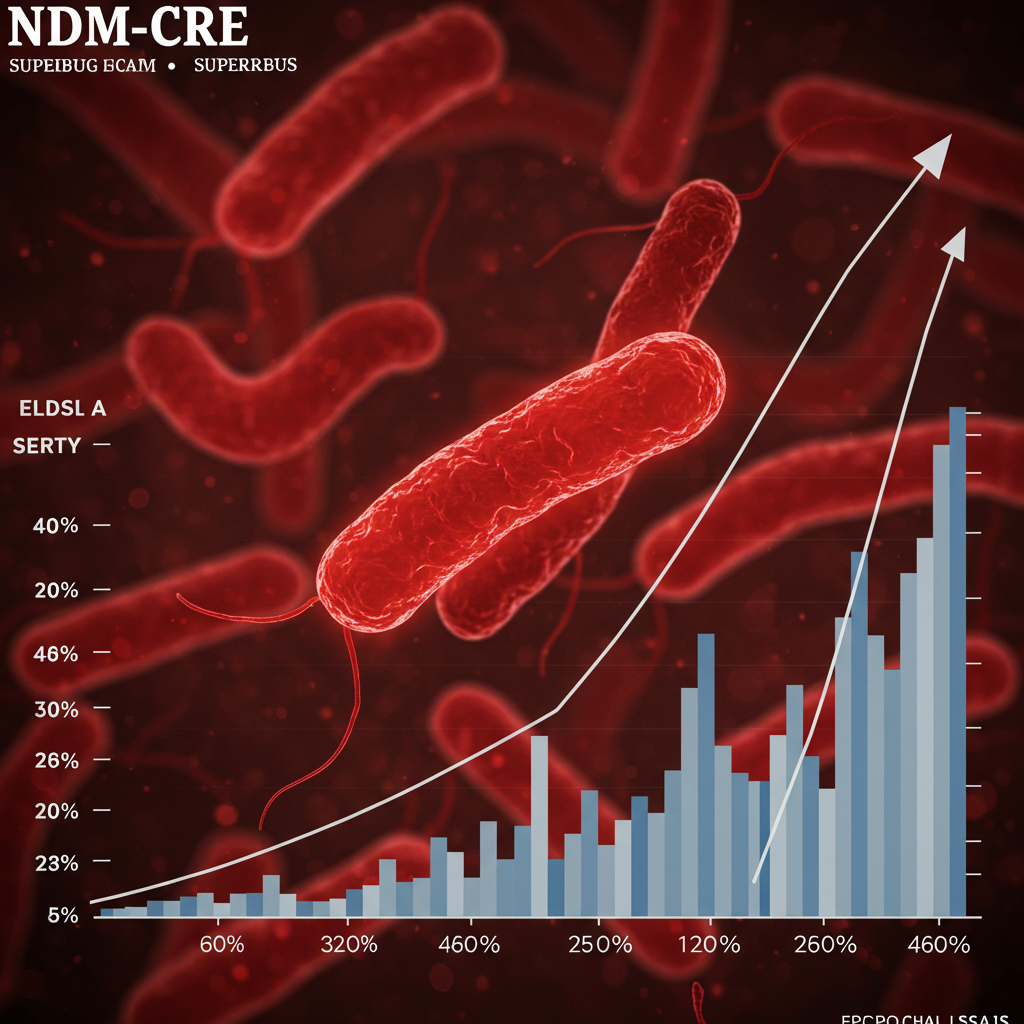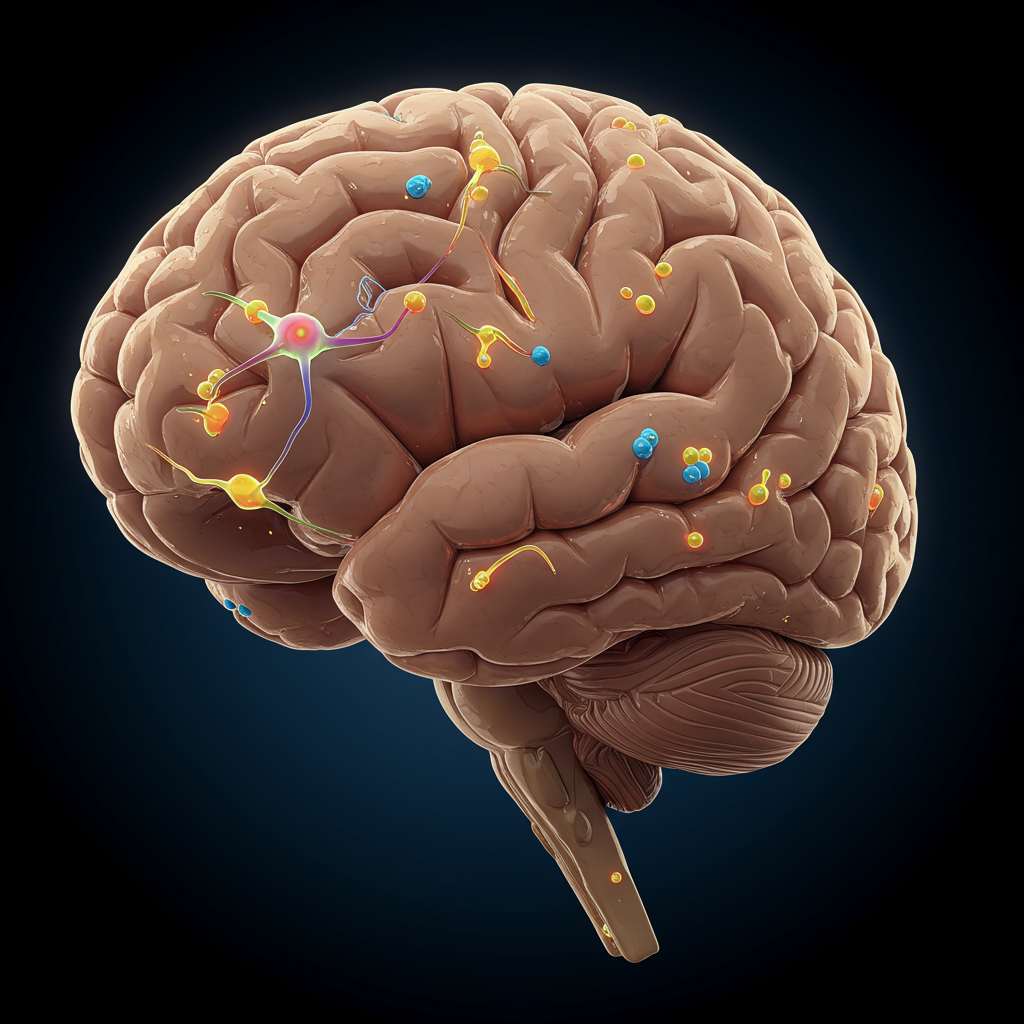The United States faces a growing public health crisis as a dangerous, drug-resistant “superbug” known as NDM-producing carbapenem-resistant Enterobacterales (NDM-CRE) has surged by an alarming 460% nationwide in recent years. This critical increase, highlighted in a new report from the Centers for Disease Control and Prevention (CDC), published in the Annals of Internal Medicine, signals a significant threat to our ability to treat common and severe bacterial infections. These formidable bacteria are rapidly becoming resistant to our strongest antibiotics, demanding urgent action from healthcare providers and a heightened awareness from the public.
The Alarming Numbers: A Critical Rise in Superbug Infections
Between 2019 and 2023, the U.S. witnessed a staggering 460% increase in NDM-CRE infections. This dramatic rise builds upon an already concerning baseline; a 2022 CDC special report noted approximately 12,700 infections and 1,100 deaths in the U.S. in 2020 due to the broader category of carbapenem-resistant Enterobacterales (CRE). The continued proliferation of NDM-CRE specifically threatens to push these numbers even higher.
These dangerous infections manifest in various forms, including:
Pneumonia
Bloodstream infections
Urinary tract infections
Wound infections
Such infections are notoriously difficult to treat and often prove deadly. Compounding the challenge, many clinical laboratories across the country currently lack the necessary testing capabilities for swift and accurate detection, leading to delays in appropriate patient care. Dr. Danielle Rankin, an epidemiologist with the CDC’s Division of Healthcare Quality Promotion, voiced profound concern, stating that this “sharp rise in NDM-CRE means we face a growing threat that limits our ability to treat some of the most serious bacterial infections.”
Understanding NDM-CRE: A Formidable Foe
NDM-CRE belongs to a broader group of bacteria known as carbapenem-resistant Enterobacterales (CRE). These are particularly concerning because they have developed resistance to carbapenems—a class of “last line” antibiotics often reserved for the most severe, multidrug-resistant infections. The “NDM” in NDM-CRE refers to New Delhi metallo-β-lactamase, an enzyme that empowers these bacteria to break down and neutralize nearly all available antibiotics.
What Makes NDM-CRE Uniquely Dangerous?
NDM-CRE stands out among drug-resistant bacteria due to several critical factors:
Broad Resistance: The New Delhi metallo-β-lactamase enzyme makes NDM-CRE resistant to virtually all existing antibiotics, including newer drugs specifically developed to combat carbapenem resistance. This leaves very few, if any, effective treatment options.
Gene Transferability: A major concern is NDM-CRE’s ability to transfer its resistance genes to other bacteria. This means that even different bacterial species can quickly acquire antibiotic resistance, accelerating the broader antimicrobial resistance crisis.
Historical Rarity and Diagnostic Challenges: Because NDM-CRE was historically less common in the U.S., healthcare providers might not immediately suspect it. This can lead to delayed diagnosis and the initiation of ineffective treatments, worsening patient outcomes.
High Morbidity and Mortality: Infections caused by NDM-CRE are associated with extremely high rates of severe illness and death, making early detection and targeted treatment vital.
Why This Threat Is So Grave: Limited Options, Rapid Spread
The escalating prevalence of NDM-CRE infections presents a grave public health challenge. Treatment decisions are becoming increasingly complicated due to the scarcity of effective antibiotics. Often, the only viable treatments are intravenously administered, which raises the alarming possibility that even common infections, such as urinary tract infections, could eventually necessitate hospitalization if NDM-CRE spreads more widely into communities.
Furthermore, these “nightmare bacteria” exhibit a significant potential for rapid spread, particularly within healthcare environments. Without stringent infection prevention and control measures, NDM-CRE can move quickly between patients and even into broader community settings. This spread is often facilitated by contaminated medical equipment, such as ventilators and IV lines, placing already vulnerable patients, like those on ventilators or with weakened immune systems, at highest risk.
Root Causes of the Resurgence: Gaps in Defense
The precise reasons behind NDM-CRE’s dramatic surge are still under investigation. However, the CDC identifies several key contributing factors:
Gaps in Infection Control
Inconsistent adherence to fundamental infection prevention practices plays a major role. These include:
Rigorous hand hygiene among healthcare providers.
Appropriate use of gloves and gowns during patient care.
Thorough cleaning and disinfection of medical equipment and surfaces.
Such lapses create pathways for NDM-CRE to spread within healthcare facilities.
Limited Testing Capacity
Many hospitals and clinics lack the necessary tools for rapid detection of NDM-CRE. This includes testing for active infections and screening asymptomatic carriers. Delayed identification means:
Slower initiation of effective, targeted treatment.
Increased risks of transmission to other patients.
Missed opportunities to implement crucial infection control measures.
This issue highlights a broader vulnerability in the healthcare system’s defense against emerging antimicrobial threats.
Protecting Patients: What Healthcare Providers Must Do
The CDC urges healthcare providers across the United States to take proactive measures to combat the spread of NDM-CRE. These actions are critical for patient safety and for safeguarding the efficacy of remaining antibiotics.
CDC Recommended Actions for Providers:
- Stay Informed: Remain acutely aware of the escalating national threat posed by NDM-CRE. Understand the local epidemiology of CRE to anticipate and respond effectively.
- Test Promptly: When a CRE infection is identified, prompt testing to determine the specific type of carbapenemase present is vital. This guides effective patient treatment and is available through some clinical and public health laboratories.
- Select Treatment Carefully: A clear understanding of the specific carbapenem resistance mechanism is essential for choosing appropriate antibiotics for NDM-CRE infections.
- Strengthen Prevention: Adhere to best practices for infection prevention and control. This includes strict adherence to guidelines for wearing gowns and gloves (e.g., Contact Precautions in acute care, Enhanced Barrier Precautions in long-term care). Collaborate actively with state and local Healthcare-associated Infections and Antimicrobial Resistance (HAI/AR) Programs to coordinate efforts.
Broader Implications: The Antimicrobial Resistance Crisis
The rise of NDM-CRE is not an isolated event; it is a stark indicator of the larger global health emergency known as antimicrobial resistance (AMR). Often referred to as the “silent pandemic,” AMR occurs when microbes develop resistance to the drugs designed to kill them. This crisis accounts for nearly 3 million infections annually in the United States alone. Globally, AMR was associated with nearly 5 million deaths in 2019, and projections from The Lancet forecast that antibiotic-resistant bacterial infections could lead to 39 million deaths by 2050, with 1.91 million deaths in 2050 alone—a nearly 70% increase compared to 2021.
Climate Change and AMR: An Interconnected Threat
Adding another layer of complexity, the climate crisis is recognized as a factor influencing AMR. Rising temperatures and extreme weather events can foster the spread and adaptation of pathogens, potentially leading to more resistant organisms. This in turn demands more intensive healthcare interventions, which paradoxically contribute to a larger environmental footprint. The healthcare sector itself is a significant contributor to carbon emissions, water usage, and waste generation. Minimizing hospitalizations, where feasible, not only reduces the risk of nosocomial infections and antibiotic exposure but also lessens the overall environmental impact of healthcare delivery.
Hope and Action: Combating the Superbug Threat
Despite the dire warnings, there is ongoing progress. Organizations like the CDC and WHO are investing heavily in antimicrobial stewardship programs. These initiatives aim to improve antibiotic prescribing practices, reduce overuse, and thereby slow the development of resistance. Advances in diagnostic tools and research methodologies are also empowering interdisciplinary teams to better understand and combat these threats. While the battle against NDM-CRE and broader AMR is challenging, sustained efforts in prevention, surveillance, and responsible antibiotic use offer a path forward.
Frequently Asked Questions
What is NDM-CRE and why is it so dangerous?
NDM-CRE stands for NDM-producing carbapenem-resistant Enterobacterales. It is a type of “superbug” bacteria that has developed resistance to nearly all available antibiotics, including the powerful carbapenems, which are often considered a last line of defense. Its danger stems from the New Delhi metallo-β-lactamase (NDM) enzyme it produces, which actively breaks down antibiotics. Furthermore, NDM-CRE can transfer these resistance genes to other bacteria, accelerating the global antimicrobial resistance crisis and leaving very few, if any, treatment options for infected patients.
What steps can healthcare providers take to combat NDM-CRE infections?
Healthcare providers are urged by the CDC to take several critical steps. They must stay informed about the national threat and local epidemiology of NDM-CRE. Prompt and specific testing is crucial when a CRE infection is suspected, to identify the exact resistance mechanism. This guides careful antibiotic selection. Most importantly, providers must strengthen infection prevention and control practices, including rigorous hand hygiene, proper use of personal protective equipment (PPE), and thorough disinfection of medical equipment. Collaboration with state and local HAI/AR programs is also essential.
How does this surge in NDM-CRE affect the broader fight against antibiotic resistance?
The dramatic surge in NDM-CRE significantly escalates the broader fight against antibiotic resistance (AMR), often called the “silent pandemic.” NDM-CRE’s ability to transfer its resistance genes to other bacteria means that more pathogens can quickly become untreatable. This makes the overall AMR crisis worse, pushing us closer to a post-antibiotic era where common infections could once again become deadly. It underscores the urgent need for enhanced surveillance, improved diagnostics, and robust antimicrobial stewardship programs globally to preserve the effectiveness of existing antibiotics and spur the development of new ones.
Conclusion
The alarming 460% surge in NDM-CRE infections in the United States presents an undeniable and urgent public health threat. These “nightmare bacteria” severely limit treatment options for serious infections and possess a formidable ability to spread. The CDC’s report serves as a critical call to action, emphasizing the vital role of robust infection control, improved diagnostic capabilities, and informed treatment decisions within healthcare settings. Tackling this escalating challenge requires a collective, vigilant effort from healthcare professionals, policymakers, and individuals alike to protect lives, preserve the effectiveness of our antibiotics, and safeguard public health against the relentless march of antimicrobial resistance.




